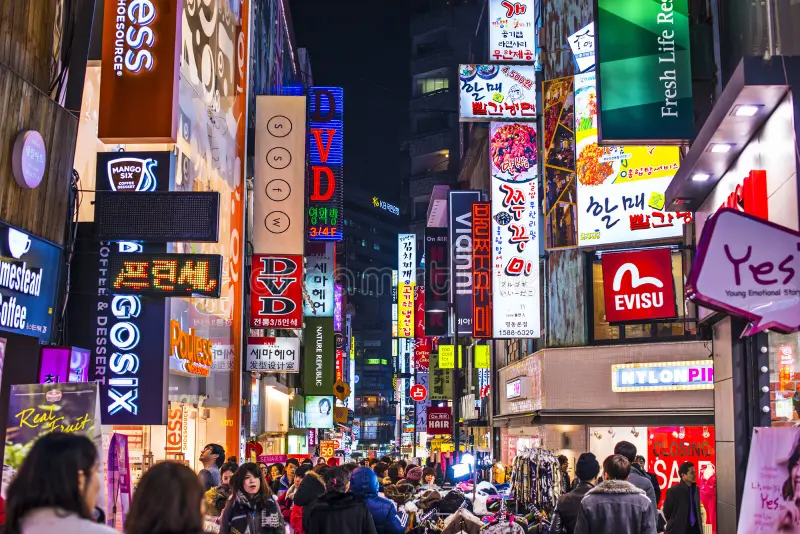Daegu’s surrounding areas offer rich historical experiences through ancient temples and traditional villages. The Haeinsa Temple, housing the Tripitaka Koreana woodblocks, provides insights into Buddhist culture and Korean history. Traditional hanok villages showcase the architectural heritage, while local museums display artefacts from various dynasties. These sites offer guided tours in multiple languages, enhancing visitor understanding of Korean cultural development through centuries.
Natural landscapes
The region surrounding Daegu features stunning natural attractions perfect for cultural immersion. Palgongsan Mountain offers hiking trails dotted with Buddhist temples and meditation spaces. The Bisulsan Provincial Park combines natural beauty with historical sites, while the Yeongnam Alps provide spectacular seasonal views. These locations allow visitors to experience Korean traditional appreciation for natural beauty.
Artistic encounters
Local art scenes flourish in neighbouring communities, offering unique cultural experiences. Traditional craft workshops teach visitors Korean paper-making, pottery, and textile arts. Contemporary galleries showcase modern interpretations of traditional themes, while public art installations reflect local cultural values. These artistic venues provide hands-on experiences in Korean creative traditions.
Culinary discoveries
Regional specialities define the cultural landscape around Daegu. Traditional markets offer local delicacies and cooking demonstrations, while family-run restaurants serve authentic regional cuisine. Tea ceremonies in historic settings provide insights into Korean hospitality traditions. These culinary experiences connect visitors with local food culture and traditional preparation methods.
Festival participation
Seasonal festivals celebrate local traditions throughout the region. Traditional music performances, dance exhibitions, and cultural demonstrations occur regularly in surrounding communities. Agricultural festivals showcase local produce and traditional farming methods, while religious celebrations offer glimpses into spiritual practices. These events provide immersive cultural experiences through direct participation.
Transportation access
Well-maintained transportation networks facilitate easy access to cultural sites. Regular bus services connect major attractions, while local tour operators provide specialized cultural routes. Rental services offer various transportation options, including traditional bicycle tours through historic districts. These transportation options ensure comfortable access to cultural destinations.
대밤 이용 후기와 고객만족도 높은 업체 추천 highlight exceptional cultural experiences in the Daegu region. Visitors particularly praise knowledgeable guides, well-organized tours, and authentic cultural encounters. These recommendations help travellers identify quality cultural experiences while maximizing their time.
Traditional performances
Cultural venues showcase traditional Korean performing arts. Pansori performances demonstrate traditional narrative singing, while traditional dance shows display regional styles. Musical performances using traditional instruments occur regularly in historic settings. These performances provide authentic entertainment while preserving cultural heritage.
Agricultural heritage
Rural communities surrounding Daegu maintain traditional farming practices. Apple orchards offer seasonal fruit-picking experiences, while traditional rice farms demonstrate ancient cultivation methods. Tea plantations provide insights into Korean tea culture through guided tours and tasting sessions. These agricultural experiences connect visitors with Korean farming traditions.
Spiritual connection
Religious sites offer peaceful cultural encounters throughout the region. Buddhist temples welcome visitors for meditation sessions and traditional ceremonies. Confucian academies showcase scholarly traditions, while shamanic sites provide glimpses into ancient beliefs. These spiritual venues allow respectful exploration of Korean religious heritage.
Modern integration
Contemporary cultural spaces blend traditional elements with modern interpretations. Modern art galleries incorporate traditional themes, while cultural centres offer updated versions of traditional activities. Innovation hubs showcase how traditional crafts adapt to modern needs. These venues demonstrate Korean culture’s dynamic nature through continuous evolution.
The variety of available cultural experiences ensures satisfaction for different interests and preferences. Whether exploring historical sites, participating in traditional activities, or enjoying contemporary interpretations of cultural elements, visitors find meaningful ways to connect with Korean culture. These diverse offerings create comprehensive cultural understanding through direct experience.

